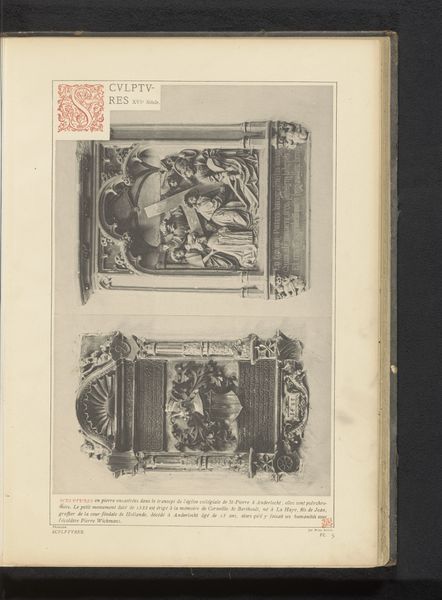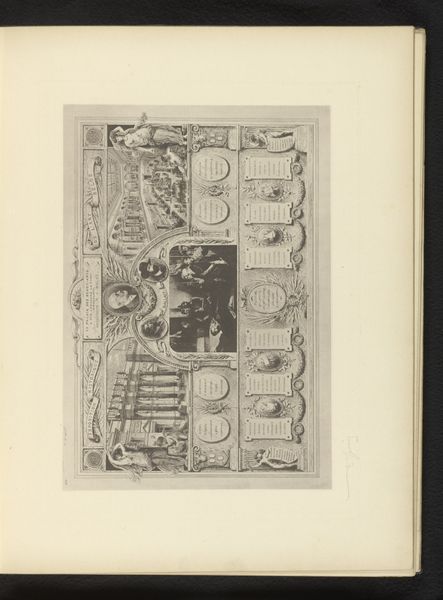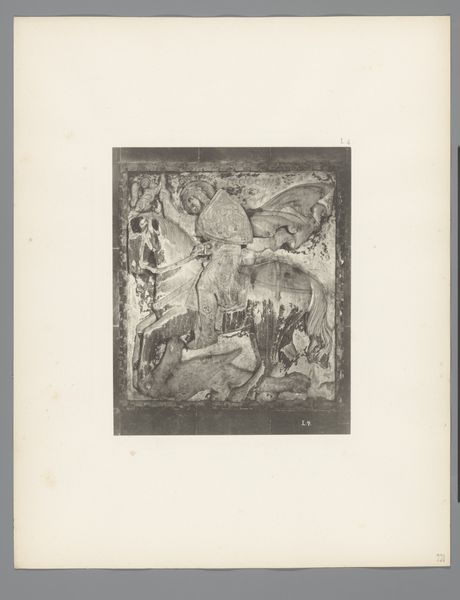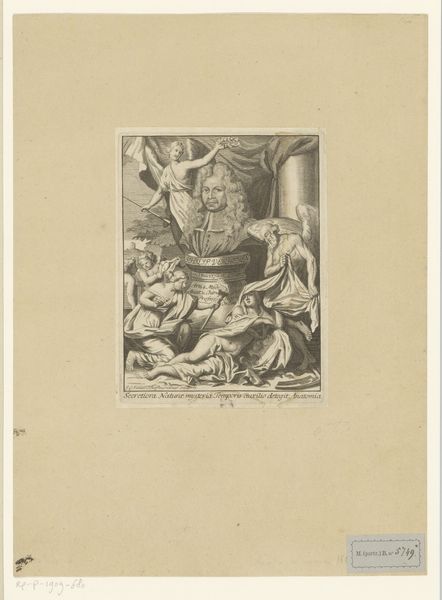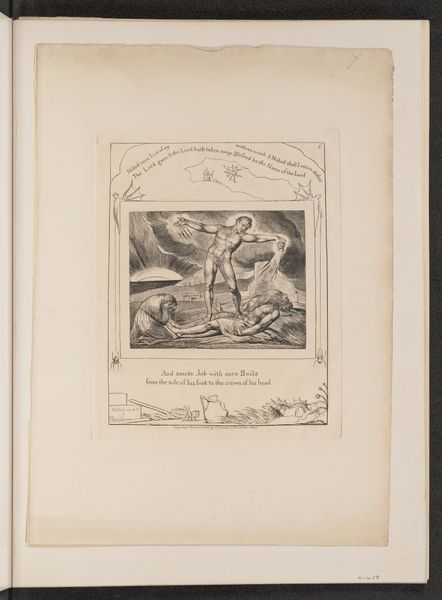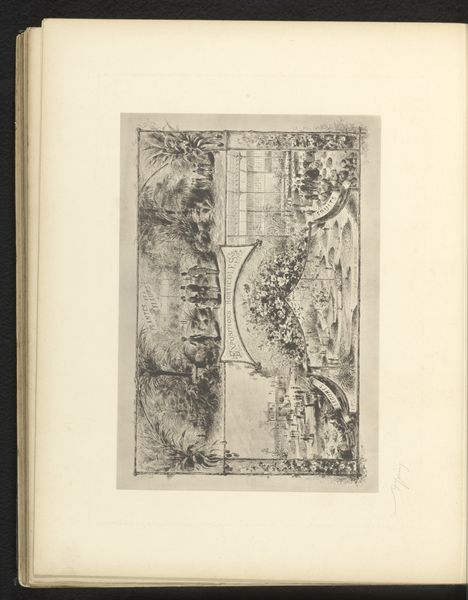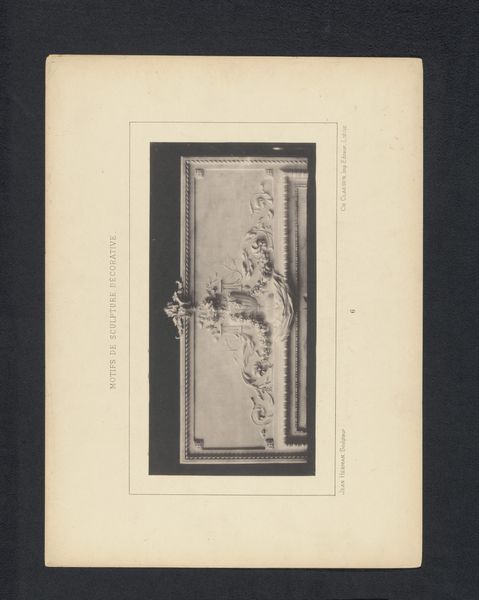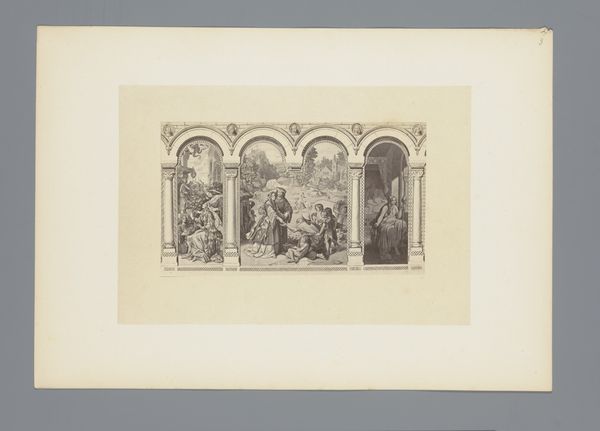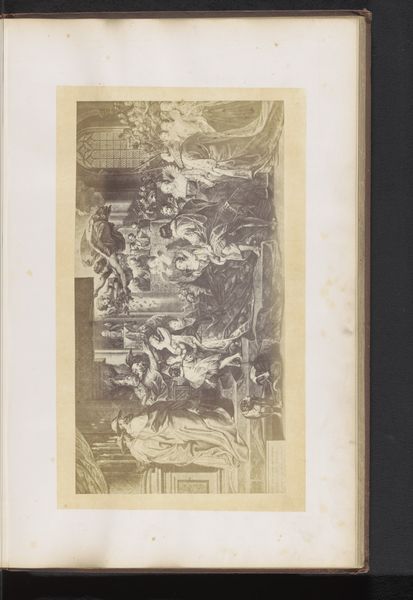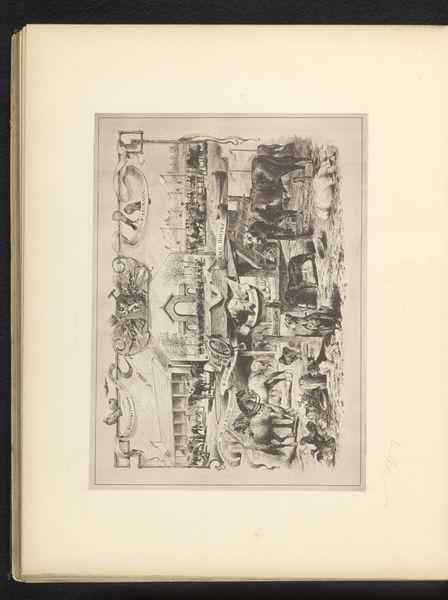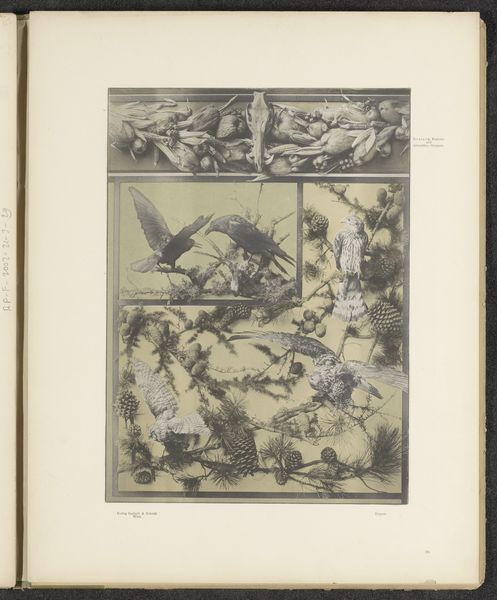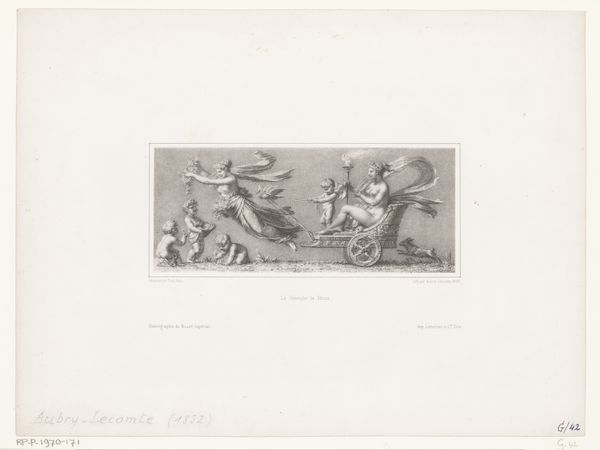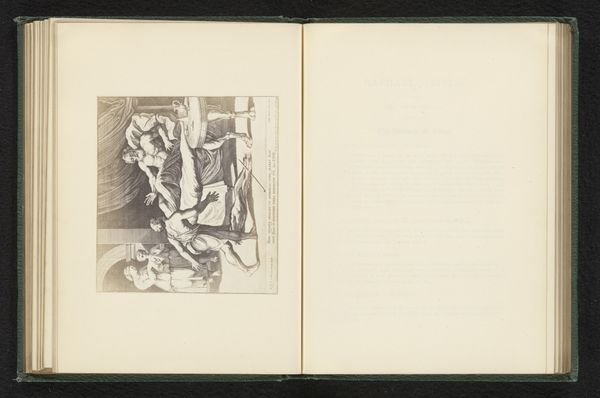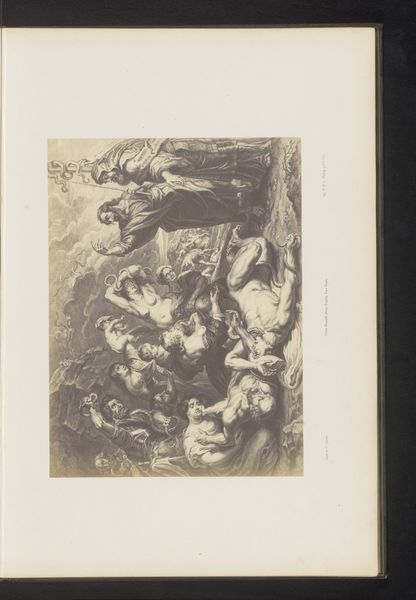
Reproductie van een gravure van mannen en vrouwen, met op de achtergrond de Exposition Nationale van 1880 in Brussel, door Armand Heins 1881 - 1882
0:00
0:00
graphic-art, print, engraving
#
graphic-art
#
pen drawing
#
mechanical pen drawing
# print
#
pen illustration
#
old engraving style
#
pen work
#
sketchbook drawing
#
history-painting
#
academic-art
#
engraving
Dimensions: height 214 mm, width 303 mm
Copyright: Rijks Museum: Open Domain
Editor: So, here we have an engraving from 1881-1882 by Armand Heins. It's titled "Reproductie van een gravure van mannen en vrouwen, met op de achtergrond de Exposition Nationale van 1880 in Brussel," which roughly translates to "Reproduction of an engraving of men and women, with the National Exhibition of 1880 in Brussels in the background". I'm struck by the juxtaposition of the classical figures with the modern architecture of the exposition in the background. What do you see in this piece? Curator: I see a carefully constructed narrative, built upon the materials and the means of its production. As an engraving, it's inherently reproducible, designed for mass consumption. Consider what's being reproduced: an image celebrating national identity through industry and art. Who would have been buying this print? What did owning such an image signify? Were these luxury items, or made more widely available? Editor: That's interesting – thinking about it as a commodity. I hadn't considered the market for engravings at the time. I guess it’s about bringing the Exposition experience into the domestic space? Curator: Exactly. And look at the technique. Engraving is a laborious process, requiring skilled labor and specialized tools. The crisp lines, the tonal variations… These were achieved through considerable effort. The very materiality speaks to a specific set of social and economic relations surrounding artistic production in the late 19th century. How does the choice of engraving as a medium affect your reading of the work? Editor: Well, it makes it seem more…official? Less like a personal expression and more like a document? Maybe meant to feel like an objective record of the event? Curator: Precisely! And how does this "objective" record reinforce specific notions of progress and national pride promoted by the exposition itself? Whose labor is being celebrated and whose labor is obscured? Editor: It does make you wonder about the laborers who built the exposition versus the refined figures depicted. I hadn’t really thought about the piece in terms of labor and materials before. This has definitely changed my perception of it. Curator: Good. It’s vital to remember that art objects are products of their time, deeply embedded in the social, economic, and material conditions of their making.
Comments
No comments
Be the first to comment and join the conversation on the ultimate creative platform.
